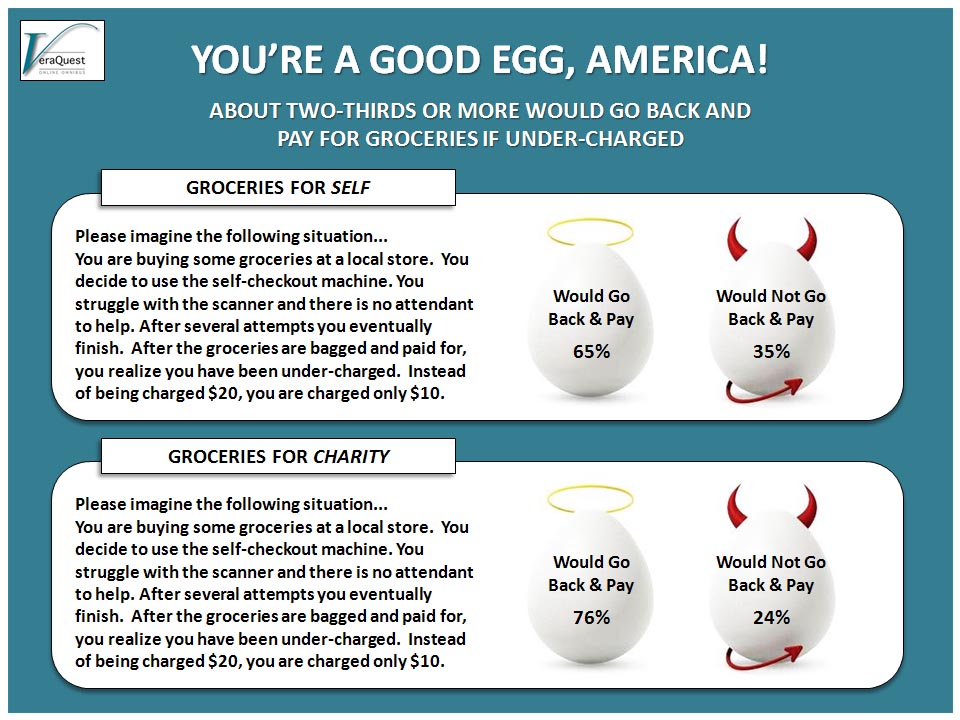I recently went shopping for a few groceries that were part of a meal that I, along with my wife, would be serving later in the evening to about 20 homeless people who were living in an emergency shelter. I was away from home and somewhat in a hurry, so I stopped at a supermarket I don’t normally shop. Since the lines at the manned checkout counters were long, I decided to use one of the self-checkout lanes. Unfortunately, the scanner was not working smoothly. It kept interrupting, telling me to start again, to put items back in the basket or to put items on the belt. After failing to catch the attention of store personnel, I gave up and did my best to muddle through. Upon checking the receipt, however, I noticed I had been undercharged by about by about $10. So what should I have done?
To find out whether I actually paid the balance or left you’ll have to call or write me, but the one thing I did do was to include several questions on our nationally representative omnibus of 1,500 respondents. I proposed the scenario just described as a hypothetical situation, but only told half the respondents about the charitable nature of the purchase. I let the other half assume they’d be purchasing for themselves. The purpose of the survey was two-fold: First, to see whether people would find someone so they could pay up or would they simply walk out, groceries in hand and $10 “richer”. Second, I wanted to determine whether shoppers would be more likely to leave without paying in-full if the purchases were being made for a charitable purpose.
According to the survey, which was fielded between March 26th and March 27th, 2014, a plurality of Americans (71%) who have ever used self-checkout counters say they would go back and pay in full. Those of us in the eastern and western parts of the country are pretty honest – 65% and 68%, respectively, would go back and pay in-full. But we’re not quite as honest as those in the south and midwest where 73% and 74%, respectively, said they’d pay. If you think that those Americans on the less affluent side of the income spectrum would find it easier to rationalize walking out without squaring up, you’d be wrong…those earning $75K or more are the most likely group to actually walk out without paying the balance.
Of those who said they’d walk out nearly half (48%) would fail to take ownership by blaming the machine, while a third (34%) would just slough it off as a hassle.

I had correctly guessed that buying for a charity or for one’s self would impact how one would answer the question of whether they’d go back in and pay in-full; however, I got it completely backwards. I thought the folks with the charitable scenario would feel more justified for leaving without paying, but 76% of people who were given the charitable purchase scenario said they’d go back compared to 65% who were under the impression they were buying for themselves. I wonder what a social psychologist would say about that.
Those of you who know me personally or professionally probably know how crazed I get about client service…or to be more specific, the lack of it. I love technology as much as the next guy. I am even happy to forego human interaction when technology provides a superior option (automated toll booths for example), but when customer service personnel are replaced by machines, while the service we receive declines, we need to push back. I am not suggesting we should go so far as to steal, but we do have choices as to where we shop. Tell me if you have ever stopped patronizing a particular store or retailer as a result of poor service.
Leave a Reply